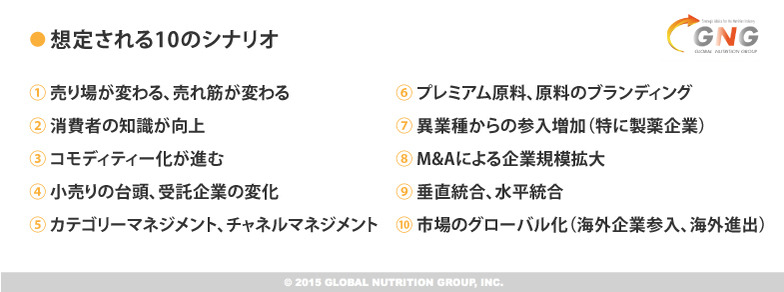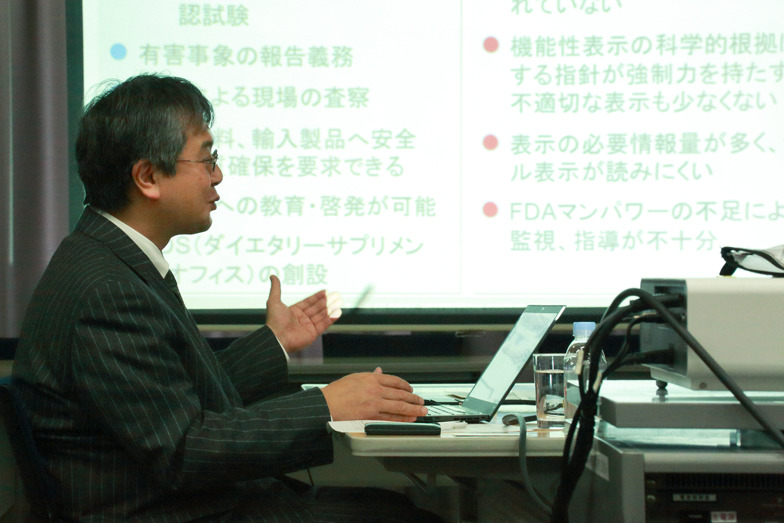Diverse Nutritional Claims and Detailed Category Strategies
Takizawa: Do you think differences in product strategy will emerge between Japan and the U.S.?
Takeda: In the U.S., since products aren't required to provide scientific evidence within their product information, it can be harder for consumers to understand which product is right for them. However, to compensate for this, companies often explicitly state the target consumer group in their marketing. For example, one company selling multivitamins first divides its products into male and female categories, then creates a category for both men and women aged 40 and over. Within each category, they further differentiate their functional appeal points, resulting in an extremely detailed product lineup.
※Vitamins/minerals are excluded under Japan's new regulations
Takizawa: Considering market trends in the U.S., how do you see the future direction of Japan's functional food labeling system?
Takeda: This is my personal view, but I've outlined ten potential scenarios for the future.
[Figure 1]
Regarding the first scenario, "Sales channels change, best-sellers change," as mentioned earlier, there are significant differences between Japan and the U.S. in sales channels and best-selling products. While we may not see such dramatic changes, it is certain that the trend toward creating sales environments and product appeals based on scientific evidence will intensify. In tandem with this, consumer knowledge will undoubtedly improve, and interest will grow.
Furthermore, as more products carry functional claims, commoditization will advance, reducing functional and quality differences between products. Private-label functional foods are also expected to increase.
Earlier, I introduced the category strategy for multivitamins in the US. Category management will also become a major key to growth in Japan. While many companies have grown through single-item direct sales, the segmentation of categories and diversification of sales channels will accelerate going forward. Furthermore, as the traditional world of emotional marketing shifts towards functional marketing, it will become easier for overseas companies to enter the market. Entry from other domestic industries will also increase. We can expect various forms of corporate expansion and alliances, such as M&A, horizontal and vertical integration.
Beyond functional claims, how to communicate benefits
Takizawa: What should manufacturers focus on or be mindful of when communicating with consumers?
Takeda: Simply displaying functionality doesn't guarantee product sales. A crucial point is how effectively they can communicate, within the bounds of scientific evidence, the "benefits of consuming that product" in an easily understandable way as part of the communication accompanying the functionality.









